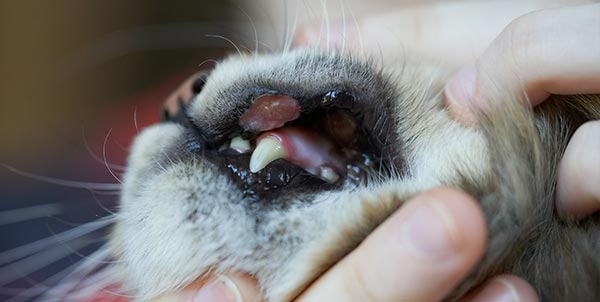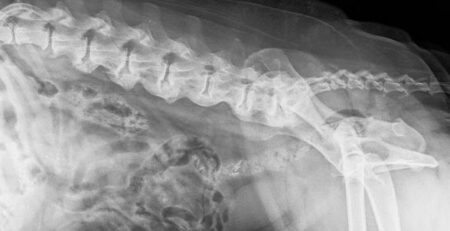Feline eosinophilic granuloma is a disease of the cat that manifests itself through the occurrence of lesions located within the oral cavity or on the skin, particularly on the lips, ear pinnae, plantar pads, interdigital spaces, inner thigh, and groin area.
The term refers to eosinophilic granulocytes, which, along with neutrophils and basophils, make up the large group of the well-known white blood cells.
Eosinophils are produced by the bone marrow and serve a dual function:
- defend the body against parasitic infestations, as in the case of intestinal worms
- are particularly active during inflammatory and allergic reactions and contribute to the body’s immune response against viruses, bacteria, parasites, allergens, fungi, and foreign bodies.
L’
feline eosinophilia
is a condition characterized by an increased number of eosinophils in the blood.
The increase in the number of eosinophils in the blood manifests itself precisely through an abnormal concentration in certain districts of the skin, giving rise to real lesions.
What do feline eosinophilic granuloma skin lesions look like?
They can present as single or clustered lesions, often alopecic, with the presence of papules and often itchy.
Itching induces the cat to cause licking and scratching: such behaviors may predispose the lesions to develop bacterial infections.
The eosinophilic complex in the cat groups three forms of skin lesions:
- the linear granuloma
- the indolent ulcer
- the eosinophilic plaque
Feline linear eosinophilic granuloma
It is the one located along the posterior margin of the cat’s thigh or in the oral cavity.
It presents as a linear yellow-whitish lesion, which is raised and hard in places.
The oral form is the most insidious: these lesions cause the cat pain and can interfere with chewing causing anorexia.
The indolent ulcer
It is a unilateral or bilateral ulcerative lesion affecting the cat’s upper lip, often at the canines.
Eosinophilic plaque
It occurs on the groin region but can occasionally be observed in other skin districts as well.
What are the causes of feline eosinophilia?
The underlying causes of eosinophilia are varied.
Among those most commonly encountered:
- food allergies
- environmental allergies
- parasitic infestations
Although rarely, feline eosinophilia can also be determined by an autoimmune reaction in the cat’s body.
In summary, then, feline eosinophilia should be considered a secondary disease whose treatment depends on the identification of the causative factor.
What treatment for feline eosinophilic granuloma complex?
Since cat eosinophilic granuloma complex is not a true disease but a reaction to a primary cause, it is up to the Veterinarian to resort to the treatments that the case requires.
First, the veterinarian will conduct a check to assess the presence of fleas and immediately resort to antiparasitic treatment if necessary.
Alternatively, the Veterinarian may evaluate a deprivation diet or perform a test for environmental allergens.
If you suspect that your cat has eosinophilia, you can have a complete checkup and the necessary clinical examinations at our facility.
We would also like to remind you that in case of need and urgency Clinica La Veterinaria is always open h24 every day including holidays and with First Aid service from 8 pm to 8 am.
For the joy of seeing them HAPPY











